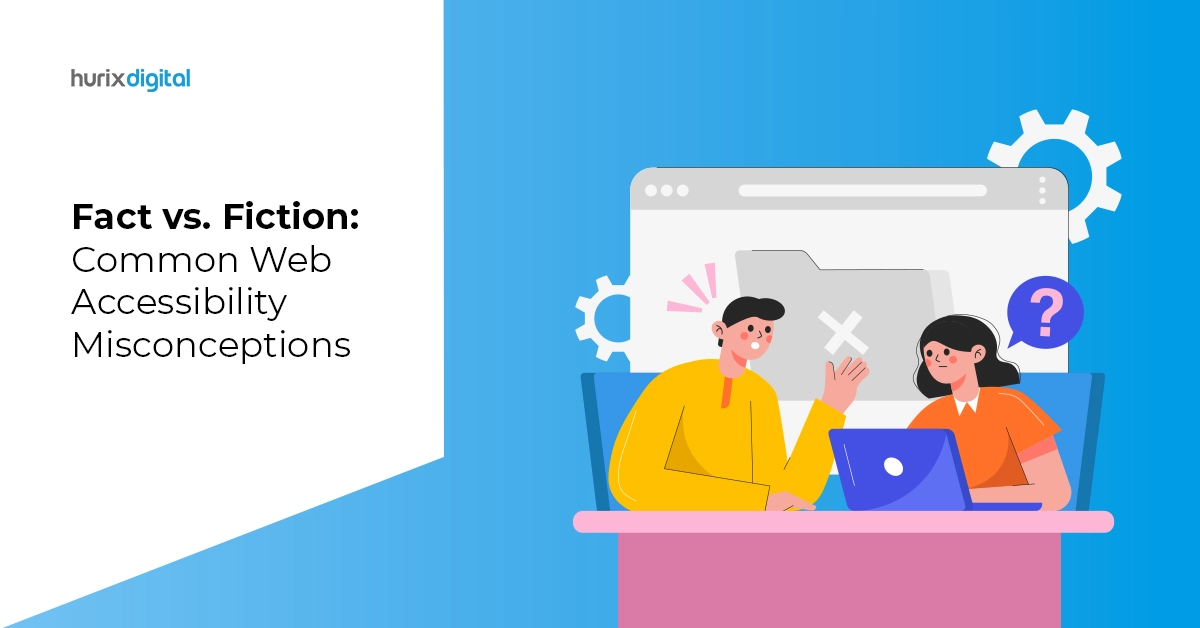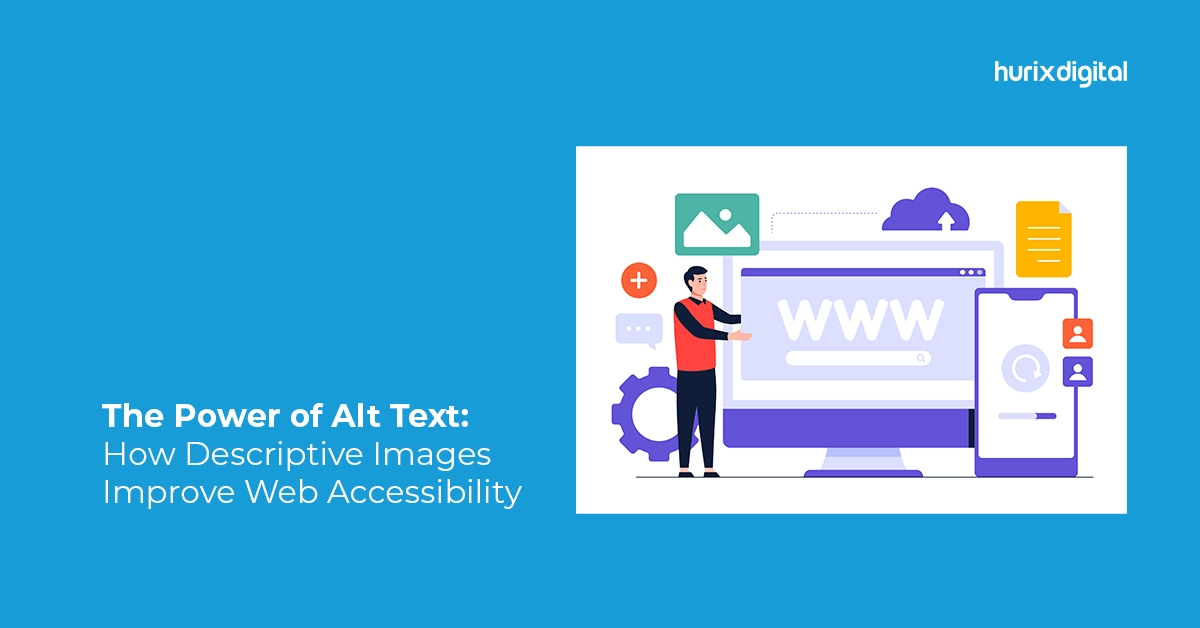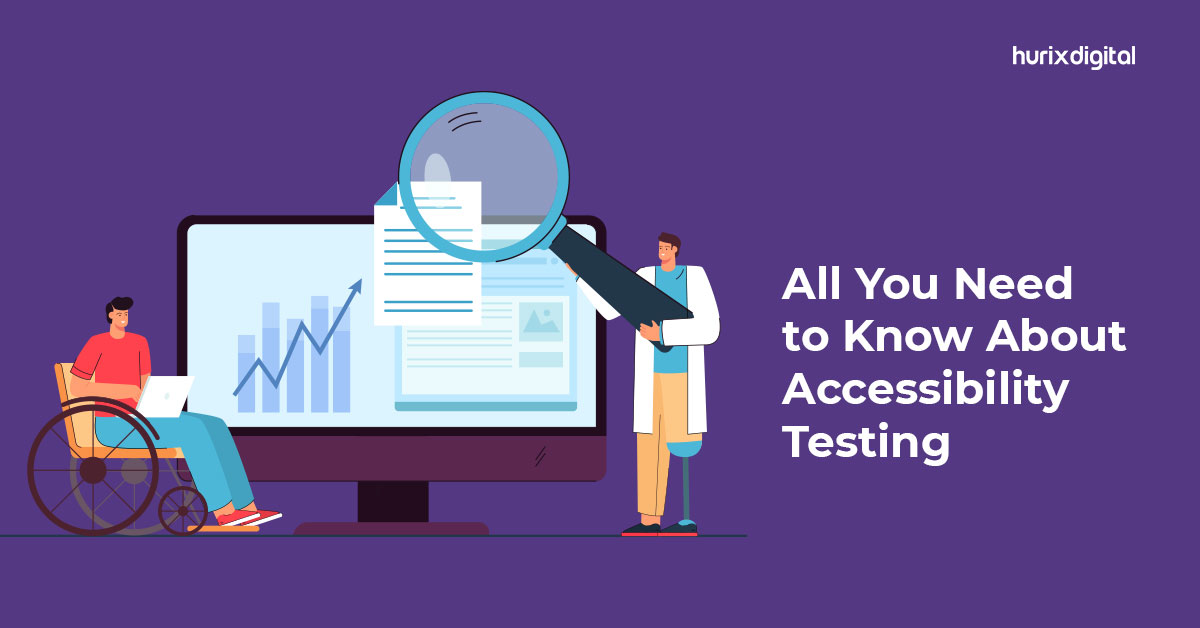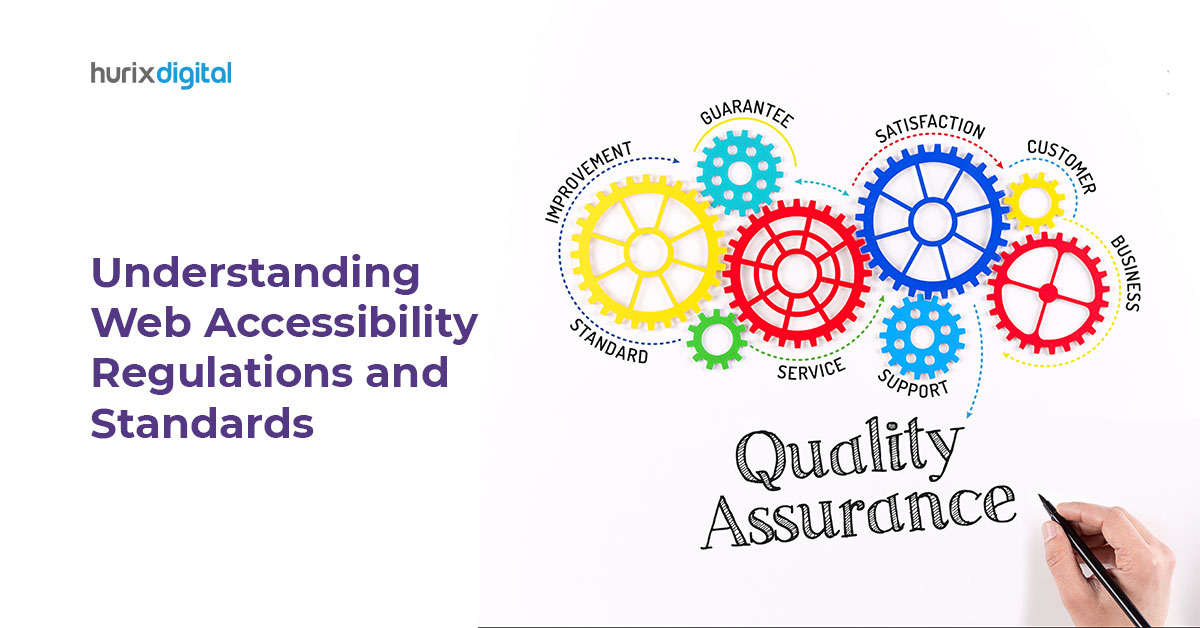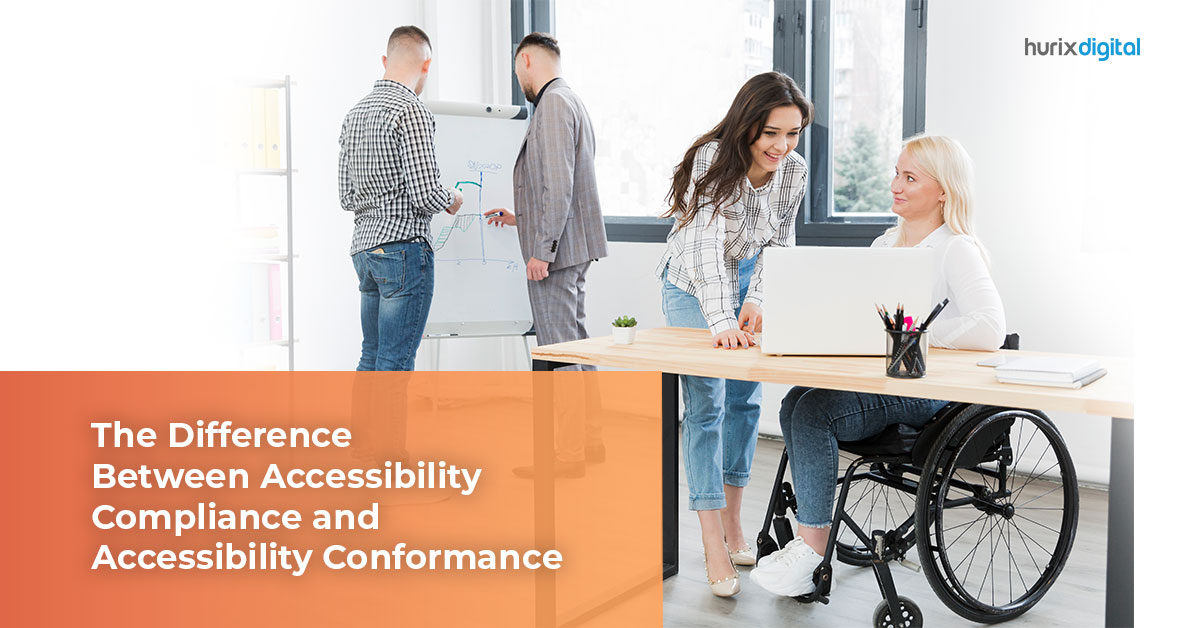
The Difference Between Accessibility Compliance and Accessibility Conformance
Summary
This article explains the distinction between accessibility compliance and conformance to aid organizations navigate the complexities of meeting legal requirements and best practices in digital accessibility.
Do you use the terms accessibility compliance and accessibility conformance synonymously? If so, then you should know that a difference exists between them.
While compliance refers to mandatory adherence, conformance is all about voluntary adherence. In other words, accessibility compliance refers to compulsorily following all the web accessibility standards.
On the other hand, accessibility compliance refers to a formal or informal commitment of a company to web accessibility standards.
Table of Contents:
1. Purpose Of Accessibility Compliance And Conformance
2. Applications Of Accessibility Compliance
3. Applications Of Accessibility Conformance
1. Purpose Of Accessibility Compliance And Conformance
As far as purpose is concerned, website accessibility compliance and website accessibility conformance share an overlap. The main purpose of both of these concepts is to make websites accessible to all people, including those who live with disabilities.
Fulfilling this purpose keeps you away from potential lawsuits and helps you comply with the ADA (the Americans with Disabilities Act). Accessibility conformance is a civil rights law that forbids discrimination against those who have disabilities in all facets of life, especially while utilizing electronic and informational technology.
Besides this, it also helps you meet the requirements of accessibility standards like –
- Section 508: This law came about in 1988 with the amendment of the Rehabilitation Act of 1974. It’s a US federal law that requires federal agencies to ensure that their electronic and information technology is accessible to people who live with disabilities.
Apart from the federal agencies, it applies to companies associated with them or doing business with them. In 2017, Section 508 was modified to mandate that agencies adhere to WCAG 2.0 Level A/AA. - WCAG (Web Content Accessibility Guidelines): These guidelines were created by the World Wide Web Consortium (W3C) with the intention of making content accessible to people, especially those who have deafness, blindness, cognitive limitations, speech deficits, etc.
The latest version of these globally accepted web accessibility guidelines is called WCAG 2.1.
2. Applications Of Accessibility Compliance
There are many practical applications of being compliant with web accessibility standards, with one of them being that your website will be accessible to everyone because of having –
- Properly styled and coded headings
- Good image descriptions with alt-text
- Subtitles and captions for videos
- Presence of high color contrast
- The feature of autofill for forms
- Well-written table of contents and glossaries
- Error-free and readable language
- The consistent layout of web pages
- Easy to navigate with a keyboard
- User-friendly web interface
Besides this, you will also be able to enjoy having the following:
Increased Reach To New Audiences
When your website is accessible, people with disabilities will spend time on your website instead of clicking away. And word of mouth will only increase this and make new people flock to your website.
When your website is easy to navigate and use, people with access needs will keep coming back to use your website rather than going to another one. Such a website will eventually build a sense of trust and reputation for your brand. This will, in turn, lead to the retention of customers and add to loyalty towards your brand.
Improved SEO Score
WCAG website compliance will easily increase your SEO score. Accessibility standards and search engines require you to produce quality content with great structure and functionality. Taking measures to avoid empty headers, providing appropriate link text, etc., will satisfy your users.
And it will likely persuade search engines like Google that the content and user experience on your website is inclusive to everyone. This will increase your likelihood of ranking higher on Google.
Inclusive Work Environment
Diversity in the workplace is very important in creating an inclusive work environment. When your website is accessible, people with disabilities can easily use the website. It also lets them know that you care about them and are mindful of their access needs.
This will increase the loyalty of your employees to your company and motivate them to take it to new heights. Apart from businesses, people with disabilities will also be able to enjoy benefits such as:
- Independent living: They will be able to access whatever information they want in its complete form without feeling limited by technology and without requiring assistance from others.
- Increased participation in society: An accessible website will allow people with disabilities to participate more in society. It will also allow them to engage in activities like online banking, online shopping, online booking, etc.
- Increased employment opportunities: Accessibility will increase the access of people with disabilities to training materials, job postings, and other job resources. As a result, their employability will increase, and so will the employment opportunities for them.
- Enhanced mental health: Being able to carry out activities without having to rely on others and having access to mental health resources online will have a positive impact on the mental health of people with disabilities.
3. Applications Of Accessibility Conformance
You won’t be sued or have to face lawsuits if you don’t conform to web accessibility standards. But it’s always a better idea to adhere to WCAG criteria.
This is because it has many practical applications, one of them being that it helps you retain more customers. Some other applications and benefits include:
- Building better connections with your customers
- Upholding your moral responsibility to the society
- Reduction in the long-term web development costs
- Reaching new demographics of the population
The End Note
Accessibility compliance and accessibility conformance are different in terms of legal requirements: the former is mandatory, while the latter is voluntary. Yet, they are pretty similar in terms of their purpose – making websites accessible for everyone, especially 16% of the global population living with disabilities.
Regardless of their differences, web accessibility is crucial for your business. So, if you want to check whether your website is compliant with accessibility standards, reaching out to web accessibility consultants like Hurix can help.
Hurix offers the combined services of software tools and IAAP-certified experts for checking accessibility according to the WCAG compliance checker. Besides an accessibility audit, Hurix also provides VPAT (Voluntary Product Accessibility Template) report.
Hurix helps you adhere to accessibility laws and aids you in enhancing the usability of your website. In addition, Hurix is the trusted choice of Deloitte, IKEA, Cambridge University Press, etc.
To create an accessible web presence for all, connect with Hurix.

Vice President – Digital Content Transformation. He is PMP, CSM, and CPACC certified and has 20+ years of experience in Project Management, Delivery Management, and managing the Offshore Development Centre (ODC).
